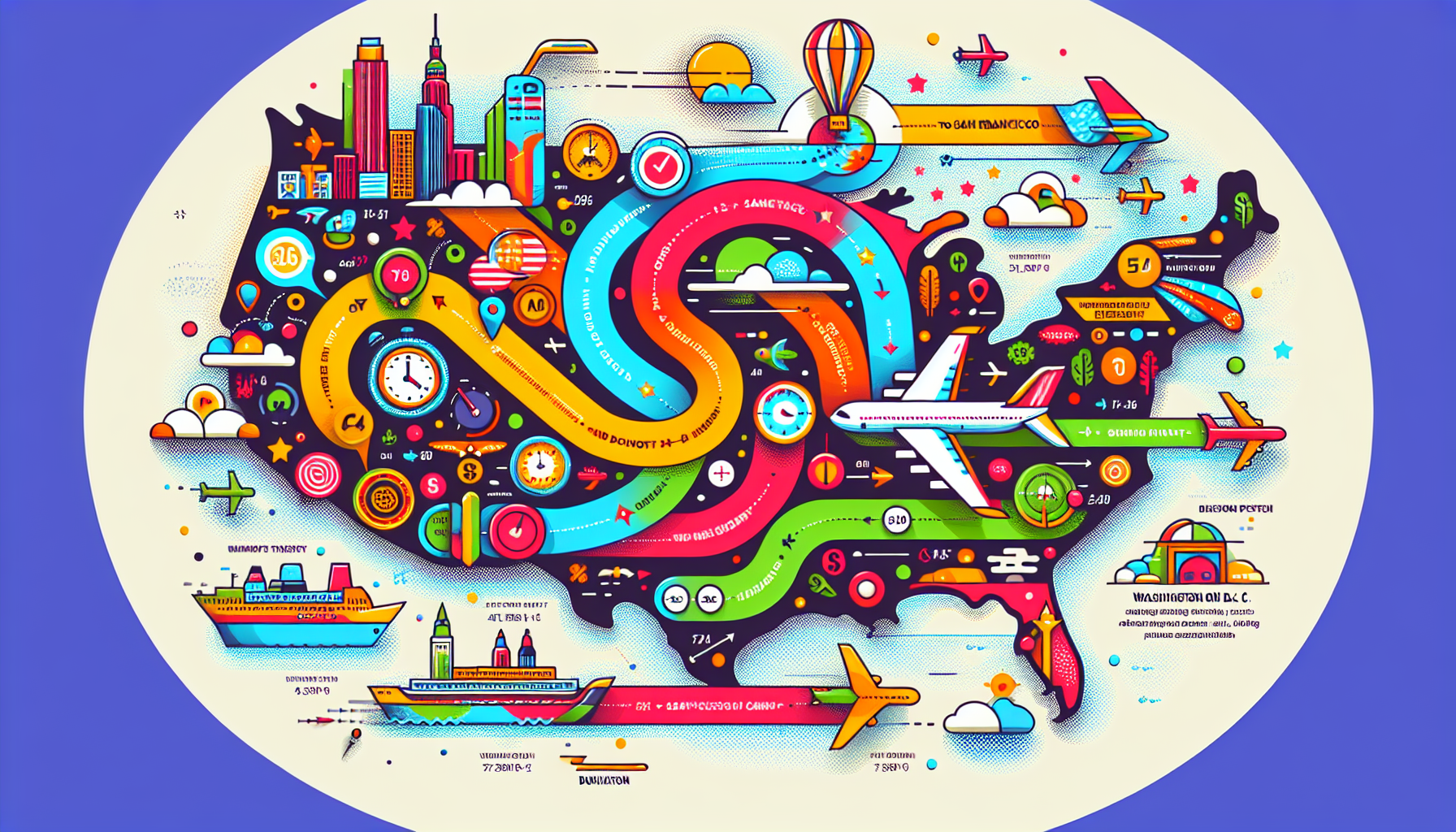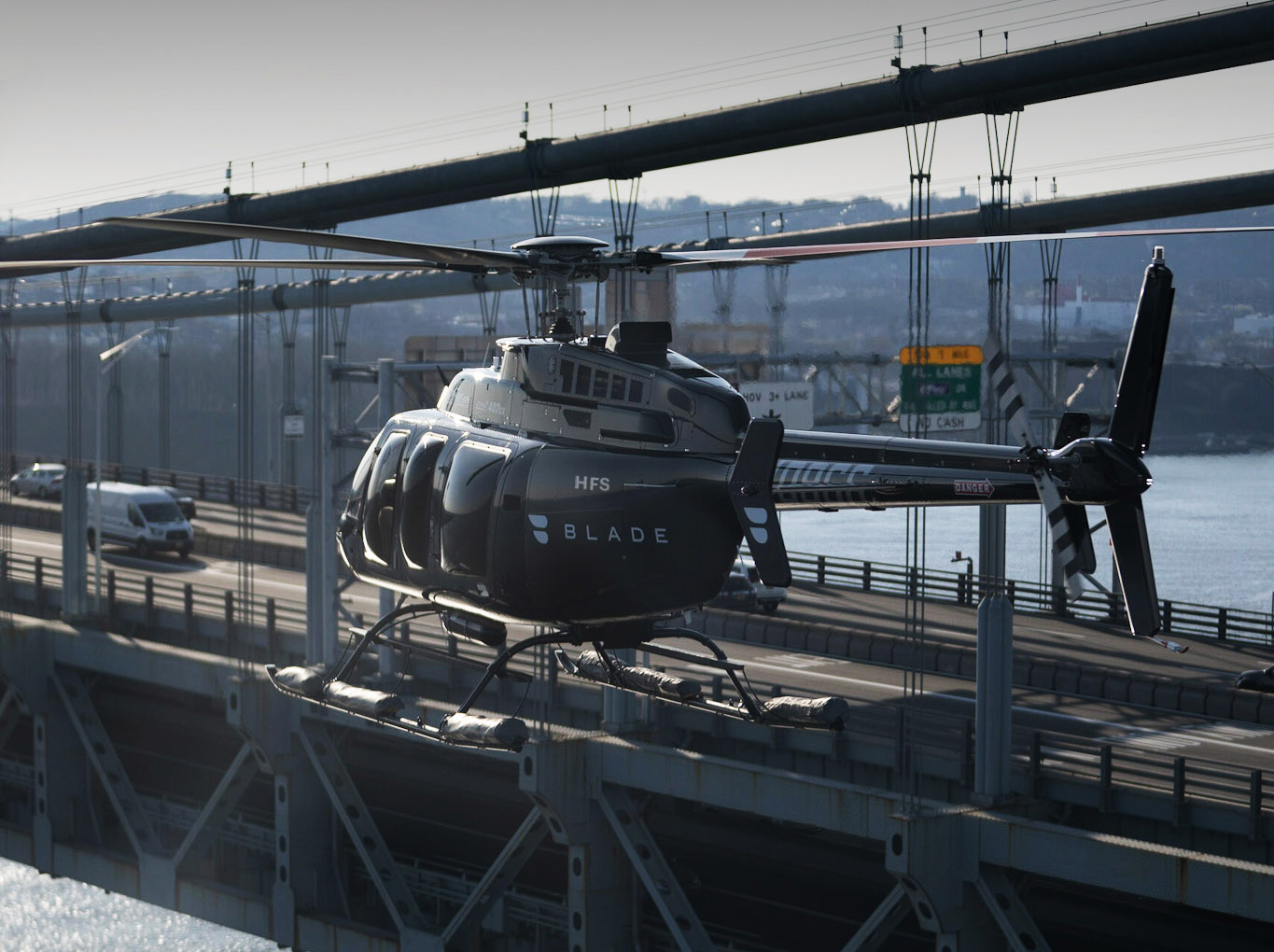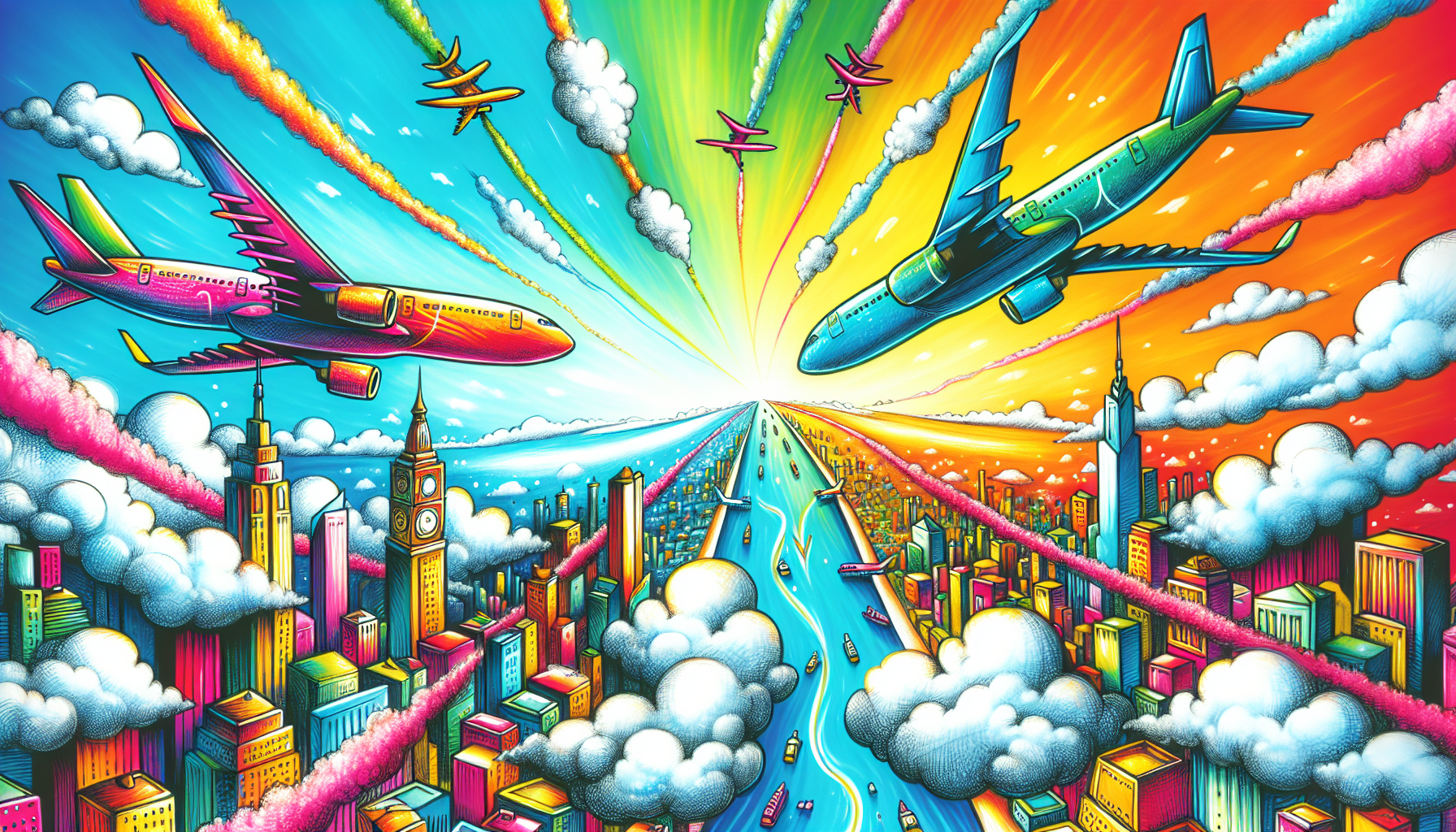DC to San Francisco Flight Time: How Long is the Journey?
Traveling from Washington D.C. to San Francisco? The average flight time, or “dc to san francisco flight time,” between these cities is approximately 5 hours and 29 minutes. However, factors like weather, air traffic, and flight path can cause this to range between 4 hours and 53 minutes and up to 5 hours and 55 minutes. Read on to explore detailed information, including direct vs. one-stop flight options, and tips for a comfortable journey.
Key Takeaways
The average non-stop flight duration from Washington D.C. to San Francisco is approximately 5 hours and 29 minutes, with variations influenced by factors such as weather and air traffic.
Travelers have the option of direct or one-stop flights, with direct flights being the fastest choice, while one-stop flights may offer lower prices and potential layover exploration.
Cheapest days to fly are typically midweek (Tuesdays, Wednesdays, and Saturdays), and employing strategies like booking in advance and using price alerts can enhance cost savings.
Average Flight Time from Washington D.C. to San Francisco

On average, the flight duration from Washington D.C. to San Francisco is approximately 5 hours and 29 minutes. This duration, however, can vary based on a number of factors. The shortest possible flight time is about 4 hours and 53 minutes, while the longest can stretch up to 5 hours and 55 minutes. These variations are often due to weather conditions, air traffic, and the specific flight path taken by the airline.
Direct flights from Washington D.C. to San Francisco International Airport typically fall within this range, usually taking around 5 to 6 hours. The convenience of a direct flight means you can avoid the hassle of layovers and additional travel time. This makes direct flights a popular choice for many travelers who value time efficiency.
It’s important to note that while the average flying time gives a good estimate, always check your specific flight details for more accurate information. Being aware of the average flight duration can help you plan your schedule better, ensuring you make the most of your time in both Washington D.C. and San Francisco.
Non-stop vs. One-stop Flights

When planning your journey from Washington D.C. to San Francisco, you’ll find that you have the option of choosing between non-stop and one-stop flights. Non-stop flights are the quickest, with durations ranging from 5 to 6 hours. This option is ideal for those who want to get to their destination as quickly as possible without the hassle of changing planes and dealing with layovers.
On the other hand, one-stop flights offer a different set of advantages. For instance, a one-stop flight from Washington D.C. to San Francisco via Columbus takes around 7 hours and 11 minutes. If your layover is in a major hub like Los Angeles, the total duration might stretch to approximately 8 hours and 9 minutes. While one-stop flights are generally longer, they can sometimes be more affordable and offer the chance to explore an additional city during your layover.
The choice between non-stop and one-stop flights depends on your priorities. If time is crucial, direct flights are preferable. However, if you are looking for cheap flights or don’t mind the extra travel time, one-stop flights can be a viable option. Ultimately, it’s about balancing convenience, cost, and personal preference.
Did you know that you can get from Manhattan to JFK in under 5 minutes without driving?
Blade offers seamless helicopter transfers from our West 30th Street Lounge in Manhattan to JFK Airport in just 5 minutes from $195 per seat.
Skip the traffic and ditch the stress with Blade's year-round airport service.

Flight Distance and Direction
The flight distance from Washington D.C. to San Francisco is approximately 2,442 miles. This long-distance journey translates to a westward flight, specifically at a bearing of approximately 268 degrees. Understanding this can help you visualize the route and the kind of landscape you’ll be flying over, from the Appalachian Mountains to the vast plains and finally the rugged Sierra Nevada before descending into the Bay Area.
This westward flight direction also means that flights might encounter different wind patterns, which can either shorten or lengthen the flying time. Knowing the distance and flight direction can give you a better appreciation of the journey and the various factors that can influence your flight duration.
Airlines Operating on this Route

Several airlines operate flights between Washington D.C. and San Francisco, providing numerous options for travelers. Major airlines on this route include United Airlines, Delta Air Lines, and Alaska Airlines. Each of these airlines offers a range of services and flight schedules to cater to different travel needs and preferences.
Other airlines such as US Airways and Frontier Airlines also provide services on this route. With so many choices, travelers can select an airline based on factors like flight duration, price, and service quality. Awareness of the airlines operating on this route can help you make an informed decision when booking tickets.
Flight Duration by Airline
When it comes to flight durations by specific airlines, there are some differences worth noting. United Airlines generally offers the fastest flights on this route, with an average duration of around 5 hours 55 minutes. This makes United Airlines a popular choice for travelers looking to minimize their flying time.
Delta Air Lines, on the other hand, typically has flights that take about 6 hours and 30 minutes. Alaska Airlines also operates flights on this route, with an average duration of approximately 6 hours. These variations in flight times can be due to different flight paths, aircraft types, and operational strategies employed by each airline.
Knowing the average flight durations by airline can help you select the best option based on your schedule and preferences. Whether you prioritize speed, comfort, or cost, knowing the specifics about each airline’s flight duration can guide you in making the right choice.
Cheapest Days to Fly
Budget-conscious travelers can save significantly by knowing the cheapest days to fly from Washington D.C. to San Francisco. Generally, flights are more affordable during the middle of the week, particularly on Tuesdays, Wednesdays, and Saturdays. This is because these days typically see lower demand compared to the beginning and end of the week.
Flexibility with your travel dates can also play a crucial role in finding cheap flights. Flying midweek increases your chances of securing lower ticket prices. Saturdays are another good option for those looking to save money on airfare. Planning your trip around these days maximizes your travel budget.
Besides choosing the right days to fly, booking well in advance and keeping an eye out for special deals and promotions can help. These strategies combined can help you find the best flight deals and make your trip more cost-effective.
Did you know that you can get from Manhattan to JFK in under 5 minutes without driving?
Blade offers seamless helicopter transfers from our West 30th Street Lounge in Manhattan to JFK Airport in just 5 minutes from $195 per seat.
Skip the traffic and ditch the stress with Blade's year-round airport service.

Factors Influencing Flight Time
Several factors can influence the flight time from Washington D.C. to San Francisco, making each journey unique. One of the primary factors is wind speed and direction, which can either speed up or slow down the flight. Tailwinds can reduce flight time, while headwinds can increase it, affecting the overall duration.
Air traffic is another significant factor. Busy airports can lead to delays during takeoff or landing, especially during peak travel times. Additionally, air routes defined by air traffic control may not always be the most direct, potentially adding extra time to the flight.
Technical issues, strikes, and other unpredictable events can also cause delays or cancellations. Awareness of these factors can help you prepare for potential changes and ensure a smoother journey.
Tips for a Comfortable Flight
A comfortable flight from Washington D.C. to San Francisco (sfo) involves some preparation. Getting enough sleep before your flight is essential to combat fatigue. Wearing layers and stretchy clothing can help you manage temperature changes on the plane and stay comfortable throughout the flight.
Bringing along a travel blanket, neck pillow, and noise-cancelling headphones can significantly enhance your comfort during the flight. These items can help you relax and sleep better, especially on long flights. Additionally, keeping basic hygiene items like deodorant and toothpaste handy can help you feel fresh and more comfortable.
These steps make your flight more enjoyable and less stressful, ensuring you arrive refreshed and ready.
Direct Flight Options

Direct flights from Washington D.C. to San Francisco are convenient for minimizing travel time. These flights typically take around 5 to 6 hours, providing a quick and efficient way to reach your destination. Several airlines offer direct routes between these cities, including United Airlines and Delta Air Lines.
Non-stop flights are available on a daily basis, catering to various travel schedules and preferences. Opting for a direct flight saves time and reduces journey complexity, making it an attractive option.
Booking Cheap Flights
Booking cheap flights from Washington D.C. to San Francisco requires some strategy. Flight comparison sites let you view prices from multiple airlines in one place, making it easier to find the best deals. Price alerts and flight deal newsletters can notify you about discounts and promotions, ensuring you don’t miss out on savings.
Being flexible with your travel dates and times can lead to significant savings. Midweek flights are generally cheaper, and booking well in advance can secure lower prices. These strategies combined can help you find the most affordable flights and make your trip more budget-friendly.
Bottom Line: DC to San Francisco Flight Time: How Long is the Journey?
To sum up, flying from Washington D.C. to San Francisco involves understanding various aspects such as average flight times, the pros and cons of non-stop versus one-stop flights, and the factors influencing flight durations. Knowing the cheapest days to fly and how to book affordable flights can make your journey more cost-effective and enjoyable.
By following our tips for a comfortable flight, you can ensure a pleasant travel experience. Whether you choose to fly direct or with a layover, being well-prepared and informed will help you make the most of your trip from Washington D.C. to San Francisco.
FAQs: DC to San Francisco Flight Time
What is the average flight time from Washington D.C. to San Francisco?
The average flight time from Washington D.C. to San Francisco is approximately 5 hours and 29 minutes.
Are direct flights available from Washington D.C. to San Francisco?
Yes, direct flights from Washington D.C. to San Francisco are available and usually take approximately 5 to 6 hours.
Which airlines operate on the Washington D.C. to San Francisco route?
United Airlines, Delta Air Lines, Alaska Airlines, US Airways, and Frontier Airlines operate on the Washington D.C. to San Francisco route.
What are the cheapest days to fly from Washington D.C. to San Francisco?
The cheapest days to fly from Washington D.C. to San Francisco are typically Tuesdays, Wednesdays, and Saturdays. Traveling during these midweek days can result in significant savings.
What factors can influence the flight time from Washington D.C. to San Francisco?
Flight time from Washington D.C. to San Francisco can be influenced by wind speed, air traffic, flight path, and any technical issues. These elements can cause variations in the expected duration of the journey.
Disclaimer:
Please be aware that the content on this page has been generated by using artificial intelligence language models and may contain errors, inconsistencies, or outdated information. It is provided as-is without any warranties or guarantees of accuracy. We strongly recommend using this content as a starting point for further research. We disclaim any liability for damages or losses resulting from the use or reliance on this content.